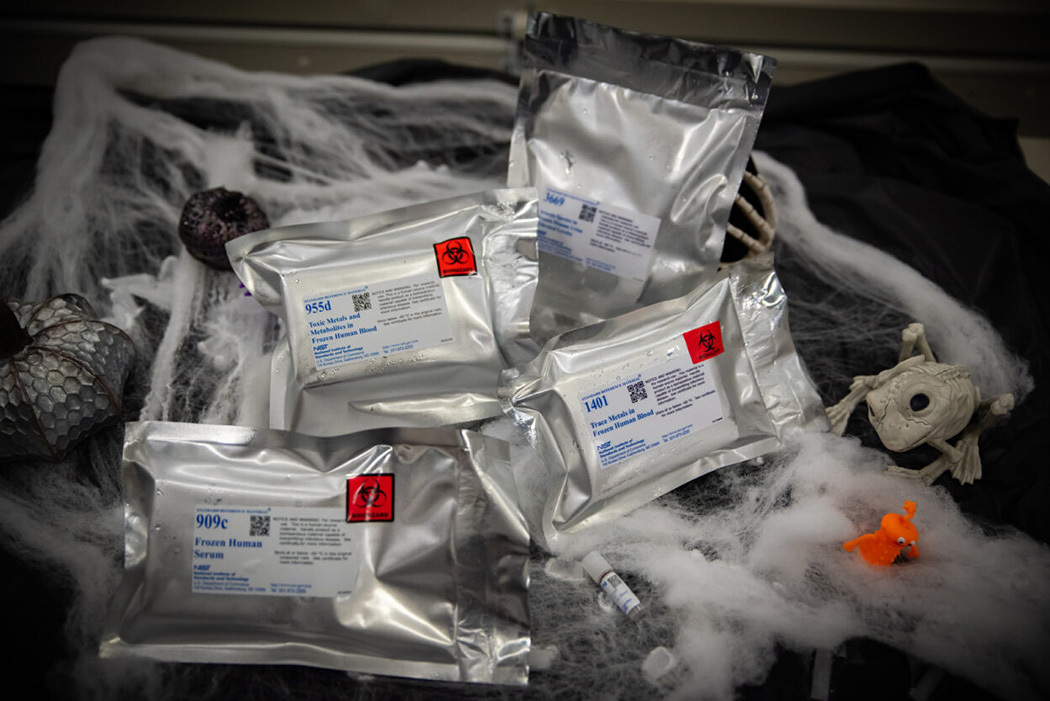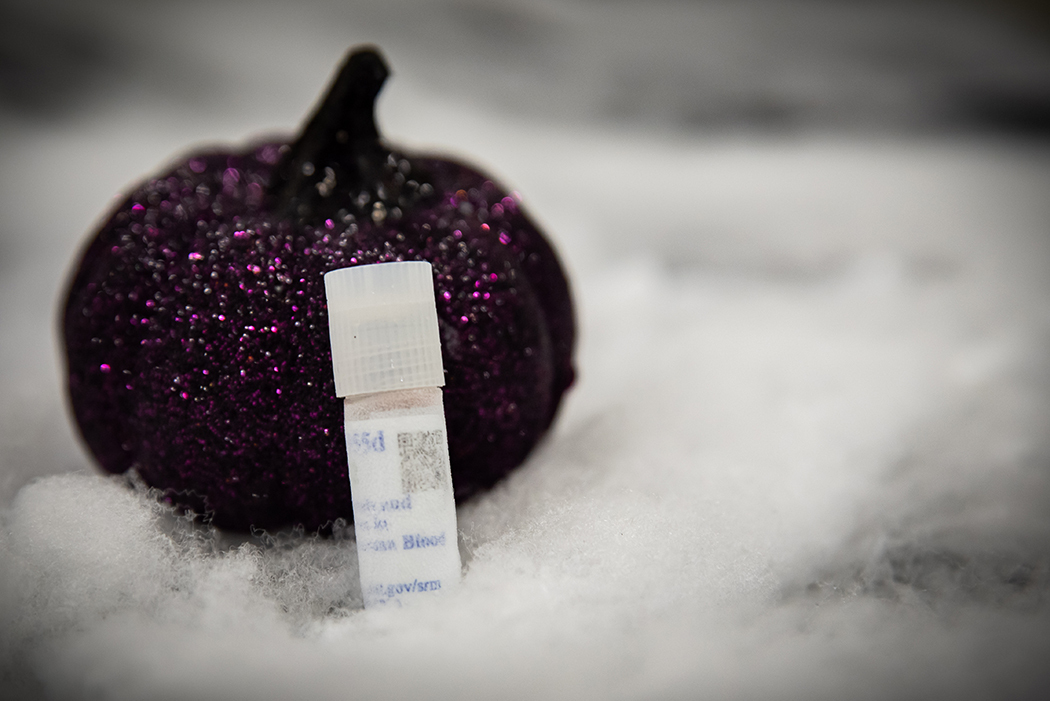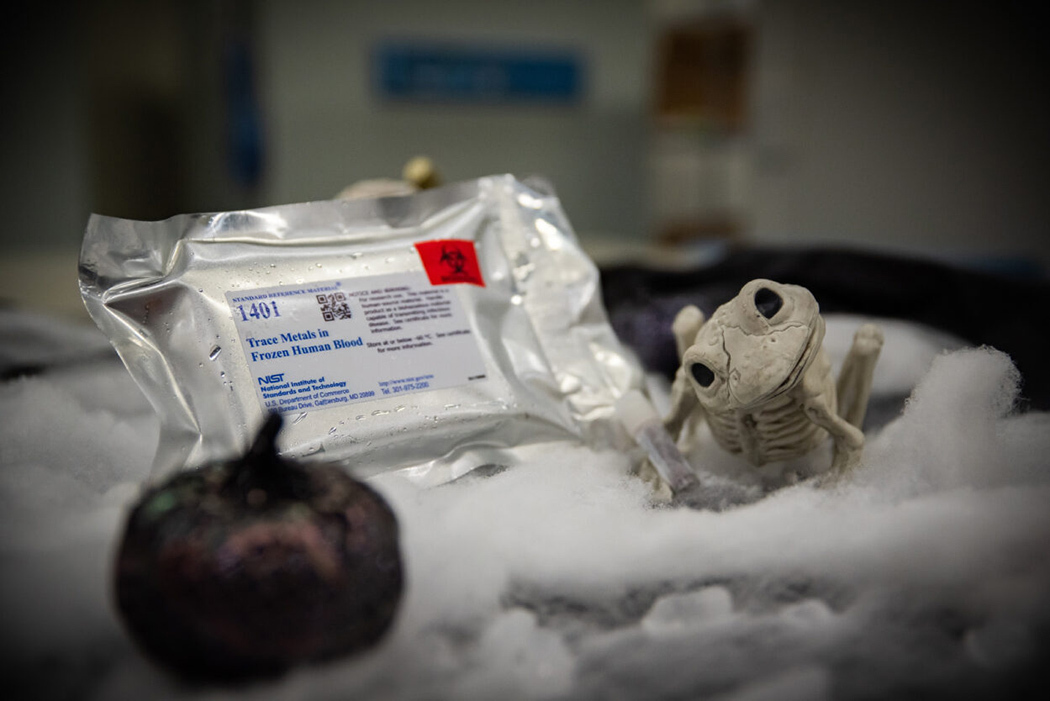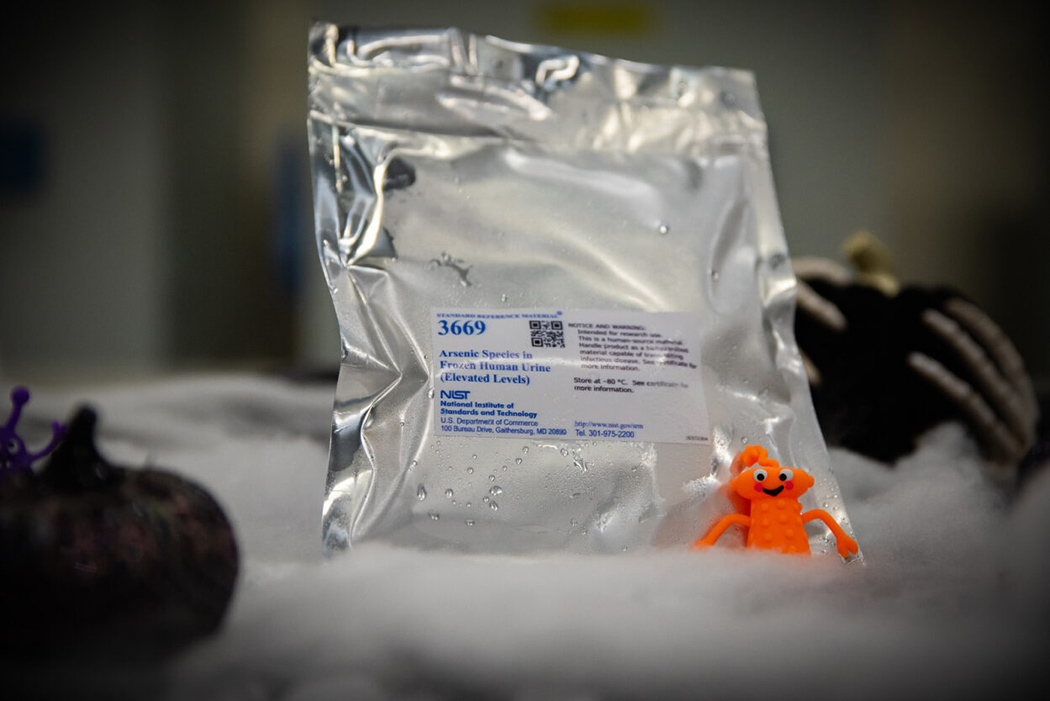Taking Measure
Just a Standard Blog
There Will Be (Precisely Measured) Blood: A Haunted House Tour Through NIST’s Spookiest Reference Materials

It’s the scariest time of year for many — with visions of ghosts, goblins and other ghastly things everywhere we look.
Here at NIST, we’re celebrating the spooky season by looking at some of our scariest standard reference materials (SRMs).
Labs and manufacturers use SRMs to ensure their equipment is making accurate measurements or to perform other quality control tests. That’s why they are sometimes called “truth in a bottle.” SRMs help make sure your food nutrition labels, medical tests and other measurements we rely on every day are as accurate as possible.
While some of the things we make as SRMs are indeed scary, we make them with the strictest safety protocols, to protect both our employees and those who will buy and use the SRMs.
Some SRMs are frozen and shipped with dry ice, making them a little extra spooky!
Blood/Serum
If you’ve seen horror movies, you know there’s usually blood. Well, we have plenty of blood deep in the bowels of our freezers on NIST’s campus in Gaithersburg, Maryland. It’s here to facilitate medical research, not to be scary! Medical research requires precise measurement and controls, so researchers rely on SRMs to test their methods.

The Frozen Human Serum standard reference material has 2 milliliters of frozen human serum, the liquid component of blood that does not play a role in clotting. NIST works with blood banks or other commercial blood collection companies to get blood from paid donors to make it. Serum is pooled together from many donors to reach custom specifications.
This SRM is used for validating measurement methods or instrument operation for health-related measurements, such as cholesterol, sodium and iron. The customers for this SRM are typically medical device manufacturers or research or clinical labs.
The SRM for Toxic Metals and Metabolites in Frozen Human Blood contains 1.6 milliliters of blood. The SRM is made with donated human blood, and the toxic metals are prepared at a required level for the SRM. Researchers studying toxic metals, such as mercury, use this to check their analytical methods. This SRM also helps validate data from the National Health and Nutrition Examination Survey (NHANES), an ongoing study that guides national health policies.

When a total joint replacement fails, patients often have elevated levels of the metals used in these replacements in their blood. NIST’s Trace Metals in Frozen Human Blood SRM helps medical professionals accurately diagnose joint replacement failures. This SRM is also made with donated human blood, with the precisely measured trace metals prepared at the required level for research.
Arsenic
Those scary stories you see at Halloween may involve a witch or other antagonist with poison.
One of the oldest known poisons is arsenic. While it’s deadly in high amounts, we can all be exposed to smaller quantities of arsenic through food, water or air.

NIST offers SRMs of human urine with arsenic at varying levels, from the middle range for the general population up to arsenic at a level found in people with arsenic poisoning. These SRMs also help validate the NHANES data.
It may seem a little strange to pay more than $1,000 for a few vials of human urine, but this SRM plays an important role in health research.
Cat Food
If you see a black cat on Halloween, don’t worry; our cat food SRM makes sure that cat’s food meets standards. (That doesn’t mean the cat won’t give you bad luck though; we can’t speak to that.)
NIST’s cat food SRM is a blend of commercially sold cat foods, and it’s ground up and blended to represent an “average” cat food. Pet food producers and regulators use it as a measurement control, so they can make sure our feline friends are getting the nutrients they’re supposed to get through food.
Happy Spooky Season From Taking Measure
As the classic Halloween song “Monster Mash” tells us, you never know what might be lurking if you work late at night in a lab.
In our labs (during the day), you will find researchers hard at work making sure we have the most precise measurements possible, even if we have to freeze a little blood to make that happen.
*No SRMs were harmed in the making of this blog post.
About the author
Related Posts
Comments
Should this read "bad" luck or did you mean to say "back" luck?
(That doesn’t mean the cat won’t give you back luck though; we can’t speak to that.)
That was an error. It's corrected. Thanks for letting us know!
Ok so for the cat food SRM, what happens if the manufacturers you source from alter their ingredients? Do you do any independent testing of nutrients to ensure your reference isn't experiencing baseline creep?
Also I love this article!
Hi, Anne. Thank you for your kind words and your question. Here's some information from one of our researchers to answer your question:
Our SRMs (cat food included) are not meant to be the same as any or all products on the market – they are intended to be a snapshot or “average” product. If a manufacturer opts to modify their recipe a bit, this SRM generally would still be relevant as a control for their nutrient testing. That said, NIST conducts testing of our product at given intervals to ensure the levels of nutrients aren’t changing without our knowledge. We do not conduct testing of commercial products to check for their conformity with our SRM, with previous versions of their products, or with their own labels. We simply provide the standards and leave the conformance testing to the laboratory and the regulatory body (e.g., FDA).






I have leukemia - what will my blood say then.